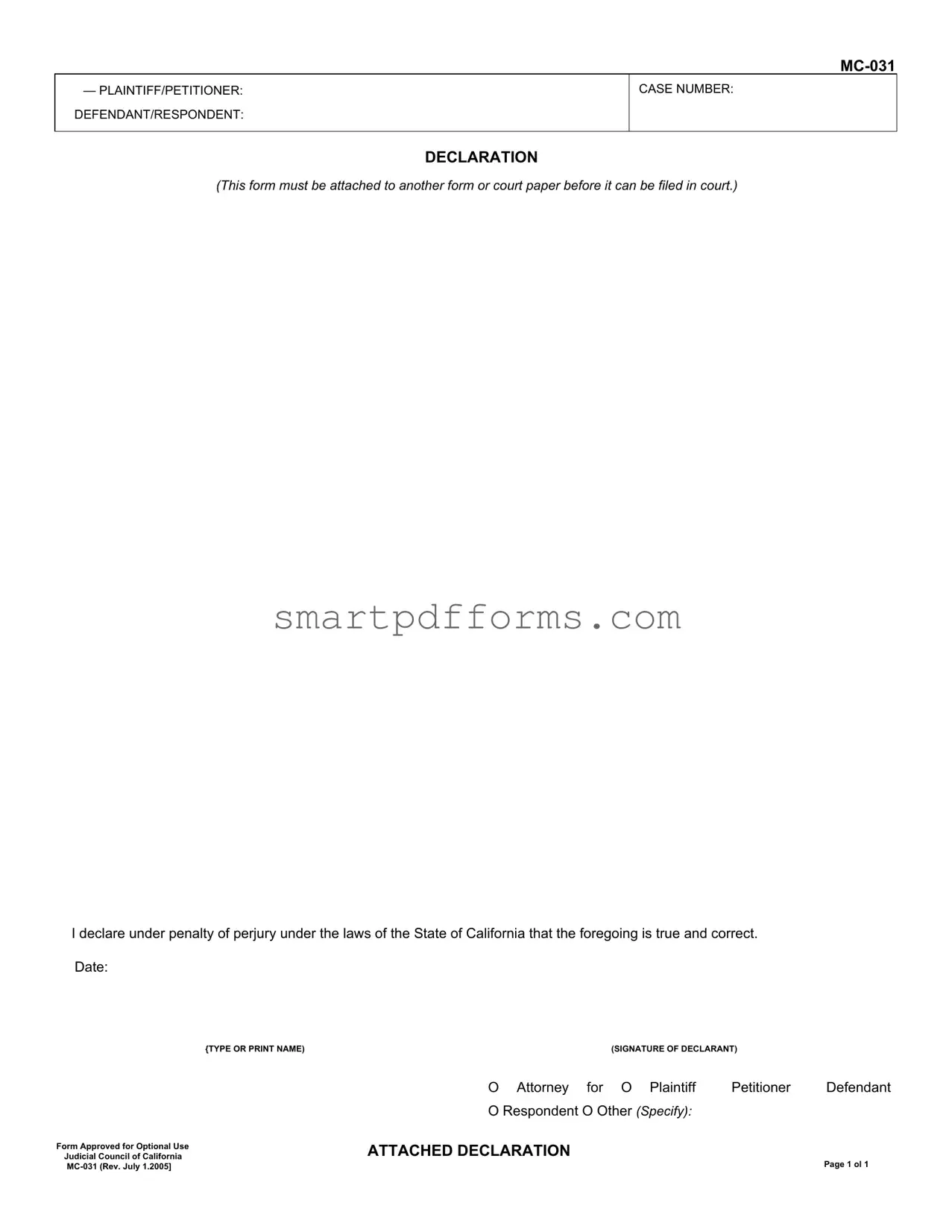Navigating the complexities of legal documentation can be a daunting task, but understanding the essentials of specific forms like the MC-031 Declaration in California is a vital step in managing legal matters effectively. This particular form acts as an indispensable tool for individuals involved in legal proceedings, serving to extend the content of other court documents or to provide necessary detailed statements in a structured manner. Its primary purpose is to allow plaintiffs, respondents, or their representatives to declare, under penalty of perjury, that the information they are presenting is accurate and truthful, thus underscoring the seriousness and legal implications of the document. The MC-031 requires signatories to affirm the truth of their statements in adherence to California state laws, ensuring all parties recognize the legal responsibilities attached to these declarations. The provision to identify the role of the person completing the form—be it attorney, plaintiff, defendant, or other specified roles—further personalizes the document to fit various legal needs. With its approval for optional use by the Judicial Council of California, this form demonstrates flexibility yet maintains a crucial position in legal documentation processes. Its seamless integration as an attachment to other forms or court papers highlights its functionality and efficiency in streamlining legal procedures and submissions within the Golden State's justice system.

